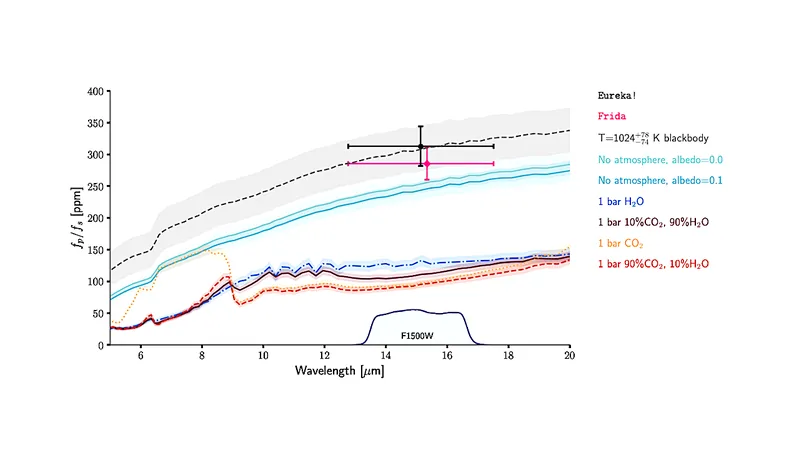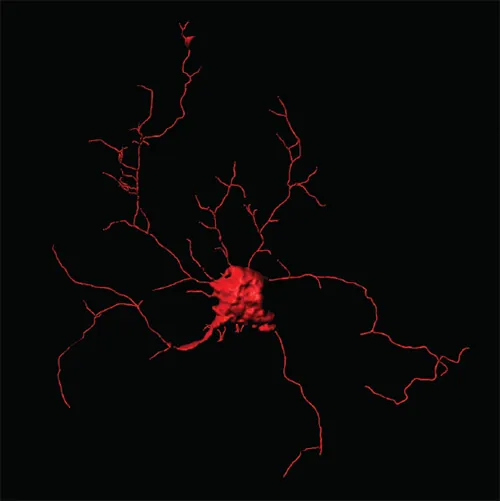
Uncovering TOI-1468 b: The Quest for Secondary Atmospheres on Exoplanets
2025-03-27
Author: Sarah
Introduction
In the exciting realm of exoplanet research, terrestrial planets orbiting nearby M dwarfs — small, cool stars that dominate our galaxy — present a unique opportunity for atmospheric studies. Though these exoplanets are constantly bombarded by intense XUV radiation from their host stars, raising questions about their atmospheric retention capabilities, the survival of thicker, secondary atmospheres remains shrouded in mystery.
The Hot Rocks Survey Program
The Hot Rocks Survey program is at the forefront of investigating this enigma, aiming to assess whether exoplanets can maintain secondary atmospheres despite the vigorous stellar conditions. One of its prime subjects, TOI-1468 b, is under scrutiny to ascertain if it harbors a significant atmosphere or is simply a barren rock with a low reflectivity.
Thermal Emission Studies Using JWST
Utilizing the cutting-edge James Webb Space Telescope (JWST), researchers conducted thermal emission studies using the Mid-Infrared Instrument (MIRI) at 15 µm. During this investigation, TOI-1468 b's occultation was observed three times, with individual observations revealing occultation depths of 239±52 ppm, 341±53 ppm, and 357±52 ppm. The aggregated data yielded an average occultation depth of 311±31 ppm.
Findings and Implications
The findings indicate that TOI-1468 b's thermal emissions are predominantly consistent with the absence of an atmosphere, displaying a zero Bond albedo with a confidence level of 1.65σ, or could represent a blackbody with a brightness temperature of approximately 1024±78 K. Alarmingly, models predicting a pure carbon dioxide (CO2) or water (H2O) atmosphere with a surface pressure exceeding 1 bar were dismissed with a remarkable 3σ confidence.
Speculations on Surface Temperature
Interestingly, the surface temperature of TOI-1468 b appears slightly hotter than anticipated, raising speculation about an undisclosed energy source at play. This anomaly could be attributed to factors such as a temperature inversion, induction heating, or even potential experimental error.
Conclusion
The findings from the Hot Rocks Survey not only deepen our understanding of exoplanetary atmospheres surrounding M dwarfs but also lay the groundwork for future expansive studies sanctioned by the Space Telescope Science Institute (STScI). As we continue to unravel the complexities surrounding exoplanets like TOI-1468 b, the quest for understanding what lies beyond our solar system grows ever more tantalizing. Keep your eyes peeled for more groundbreaking discoveries as researchers delve into the mysteries of the universe!



 Brasil (PT)
Brasil (PT)
 Canada (EN)
Canada (EN)
 Chile (ES)
Chile (ES)
 Česko (CS)
Česko (CS)
 대한민국 (KO)
대한민국 (KO)
 España (ES)
España (ES)
 France (FR)
France (FR)
 Hong Kong (EN)
Hong Kong (EN)
 Italia (IT)
Italia (IT)
 日本 (JA)
日本 (JA)
 Magyarország (HU)
Magyarország (HU)
 Norge (NO)
Norge (NO)
 Polska (PL)
Polska (PL)
 Schweiz (DE)
Schweiz (DE)
 Singapore (EN)
Singapore (EN)
 Sverige (SV)
Sverige (SV)
 Suomi (FI)
Suomi (FI)
 Türkiye (TR)
Türkiye (TR)
 الإمارات العربية المتحدة (AR)
الإمارات العربية المتحدة (AR)